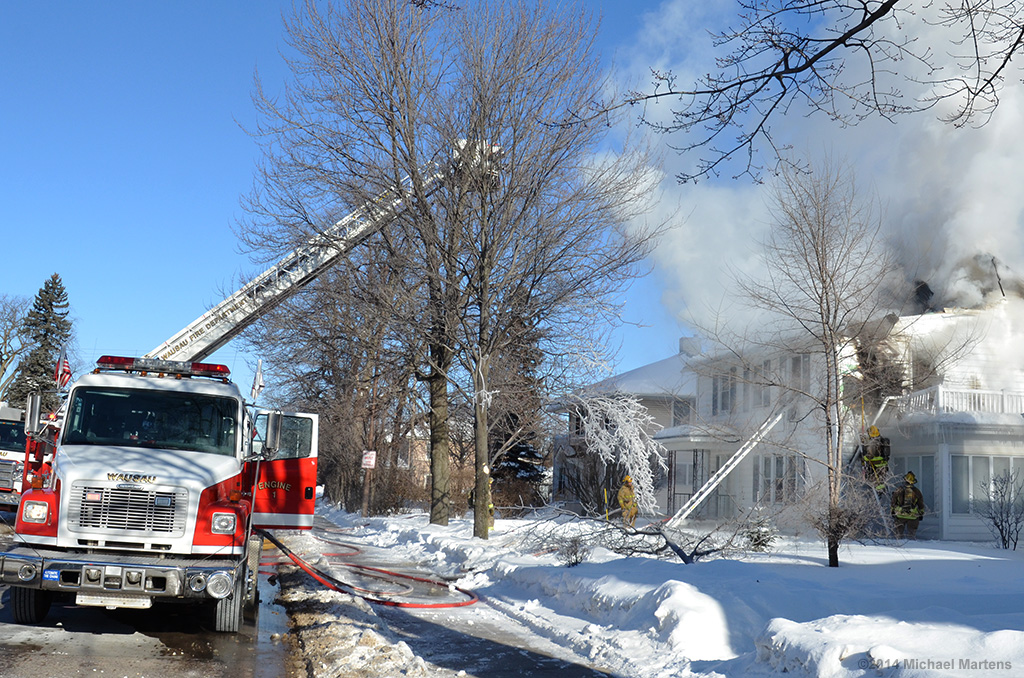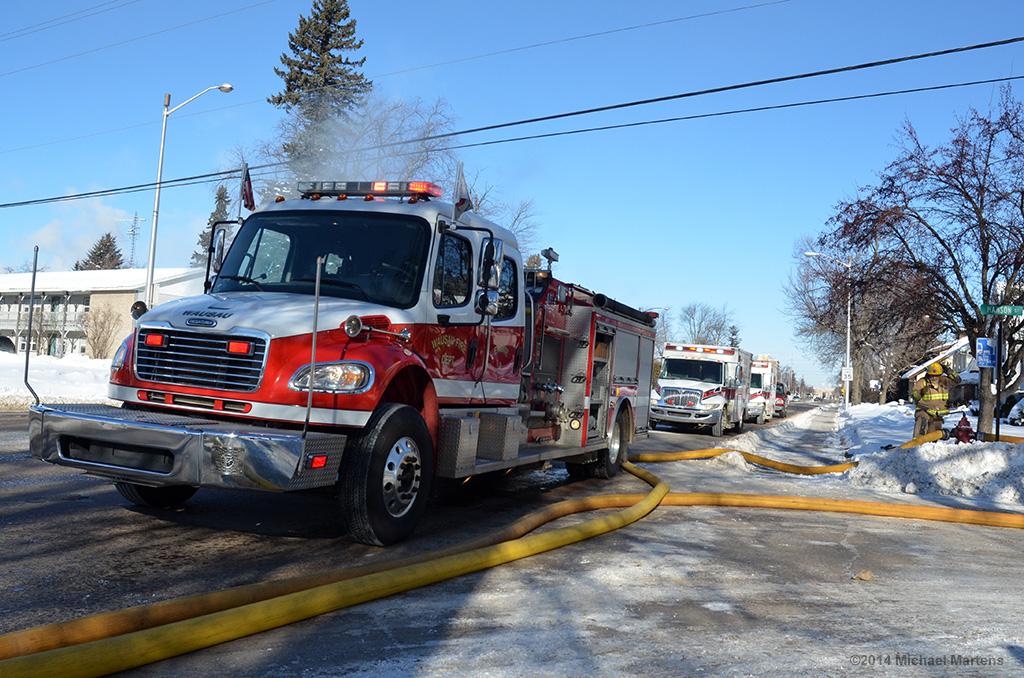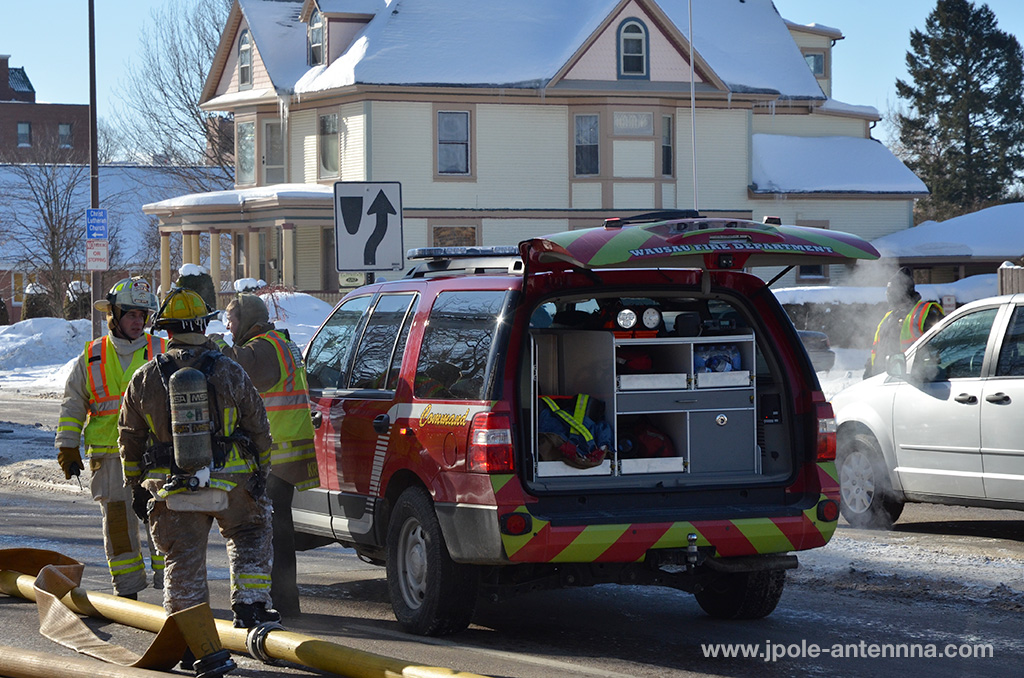I love listening to the scanner. In fact, it was a scanning around in the late 1990’s that led me to find the amateur radio frequencies and my eventual getting my ham radio license. But I certainly haven’t let go of my scanner roots, I’ll often have a radio on, monitoring the local police and fire channels. Listening to the police can be fun, but the real action is on Fire and EMS.
With the recent switch to narrow band channel spacing and digital transmissions, scanning has become more challenging. But the good news is that even though most police and public safety channels went digital, local fire department opted to stay analog, keeping a door open for us local fire buffs.
The move to narrow band channel spacing
Two years ago the FCC required VHF and UHF land mobile and public safety radio license holders to move to a 12.5KHz channel bandwidth. As radio communications technology has become more sophisticated, this “narrowband” channel spacing allows for greater efficiency as more channels can occupy a chunk of radio spectrum.
As many public safety agencies made the change, they also opted to upgrade their equipment to the P25 digital format. Part of the reason was, if they had to by new equipment, they might as well make the investment into digital. But the great reality was moving to the narrow bandwidth reduced the effective range of their transmissions, so switching to digital was one way to recoup some of those losses.
While the move to digital has quieted the public safety radio channels, many Fire and EMS services caught up in the transition decided to not follow the digital trend, and instead keep their communications in an analog, albeit in narrowband format. This is especially true for departments that rely on a large corp of volunteer fire fighters and first responders. To be able to use their analog pagers and scanners kept rural departments and volunteers in better contact with dispatch. This is good news, since older analog scanners can still pick up the narrowband channels.
But using older scanners on the fire and EMS channels aren’t without challenges. The first thing you’ll notice is that the audio is much quieter. A 12.5 KHz narrow band transmission received with a 25 KHz wide band scanner will sound 3db quieter. Because the signal is occupying half of the channel space of the old scanner, the signal will sound half as loud to the scanner. Turning up the volume on your scanner should solve that problem.
The second issue is that older scanners may not be able to tune to the 7.5KHz channel steps that the new narrow band channel spacing has. Scanner with a 5 or 6.5KHz channel steps will not be able to program in the new frequencies. In this instance, the best you’ll be able to do is to program the frequency as close as you can, and know that you’ll be 5KHz off frequency. As long as you’re just listening, this won’t be an issue; but it will reduce your received audio a little bit more.
Is it worth the trouble to go through all these hoops just to listen to a few channels? I think some of the best scanning is on fire and EMS, so yes it probably is.
Fire and EMS Dispatch Frequencies
Each county and municipality will have a unique dispatch and paging channel. Some counties may also combine dispatch and paging into one frequency, or place larger municipalities on their own channel and the smaller rural departments in the county on a different channel. If this is the case, how will I know what my local fire and EMS channels are?
The Radio Reference website is invaluable for finding local public safety and municipal frequencies. This national database relies both on FCC license information and crowd-sourced input to keep the frequencies and channel information up to date. The radio reference data can even be downloaded and imported into the latest generation of programmable scanners.
Reading the Radio Reference charts, you may or may not be familiar with the terminology contained in them. For Fire/EMS there are three different types of channels: Dispatch, paging, and Fireground
- Dispatch – a channel for communications between dispatch and field units, also unit to unit
communications for longer range if through a repeater - Paging – a channel primarily for transmitting alerting messages to paging receivers
- Fireground – a channel for on scene tactical communications
On the Radio Reference chart you’ll also see the Type, Tone, Alpha tag and Mode. In Radio Reference, if you hover over the chart titles, you will get a brief description of the column’s contents. The Type of channel is specified as R for repeater, B for Base, and M for mobile/handheld. Dispatch channels will operate on a repeater while paging and foreground channels are often simplex, or unit to unit transmissions. Tone is the PL or CTCSS tone, which is a sub audible tone that is transmitted along with the voice to help eliminate interference. Most scanners don’t have a ability to decode tone, so you can ignore it. Finally there is the mode. This is the mode of transmission. P25 is digital, while FMN is narrow band analog and FM is wide band analog.
Need a good external antenna for scanning VHF/UHF frequencies?
Consider my VHF Public Safety J-Pole Antenna.
Fire Department Equipment
Now that the scanner’s all programmed, and you’re listening to fire and EMS calls, you may be wondering what everything means. Fire departments have unique terminology for their apparatus, or pieces of equipment.
- Engine – The most common vehicle, they typically carry 500 gallons of water and have the ability to pump 500 – 1500 gallons of water a minute from hydrants or pools.
- Tender – Also known as tankers, these are used in rural areas not served by hydrants. A tender can hold up to 5,000 gallons of water.
- Truck – Also known as Ladder or Aerial. This is an engine with an extendable ladder that may reach up to 100 feet. It will also have a high capacity waterway for fighting high level fires.
- Med – Ambulance or medical vehicle. Modern meds are often equipped with paramedics and advanced life saving equipment.
- Rescue – Large vehicle that carries specialized equipment for vehicle extrication, technical rescues, and house/building fires.
- Haz Mat – Hazardous Materials truck. Carries special equipment for treating chemical spills and other dangerous situations.
- Command Truck – An SUV or truck that the incident commander will operate out of during a fire or larger incident
There are other pieces of specialized equipment not listed here. Rural departments may also have brush trucks and all terrain vehicles for dealing with wildland fires, and other departments may a boat for water rescues. Each department usually has a compliment of equipment to meet the needs of the community.
Conclusion
I enjoy listening the scanner. It’s fun to listen to the police, but the real action is located on the Fire/EMS channels. While a large house fire can be a devastating thing, listening to the action on the scanner can be a exciting adventure. Working carefully around the fire scene, I’ve been able to get some amazing pictures. Plus I always love to know where the trucks are heading when I hear sirens in my neighborhood.
Are you a fire buff? Love to listen to fire departments on the scanner? Tell us your experience in the comments below.




THANKS FOR SHARING ALL THIS GOOD INFORMATION, PLANNING ON ORDERING AN ANTENNA SOON